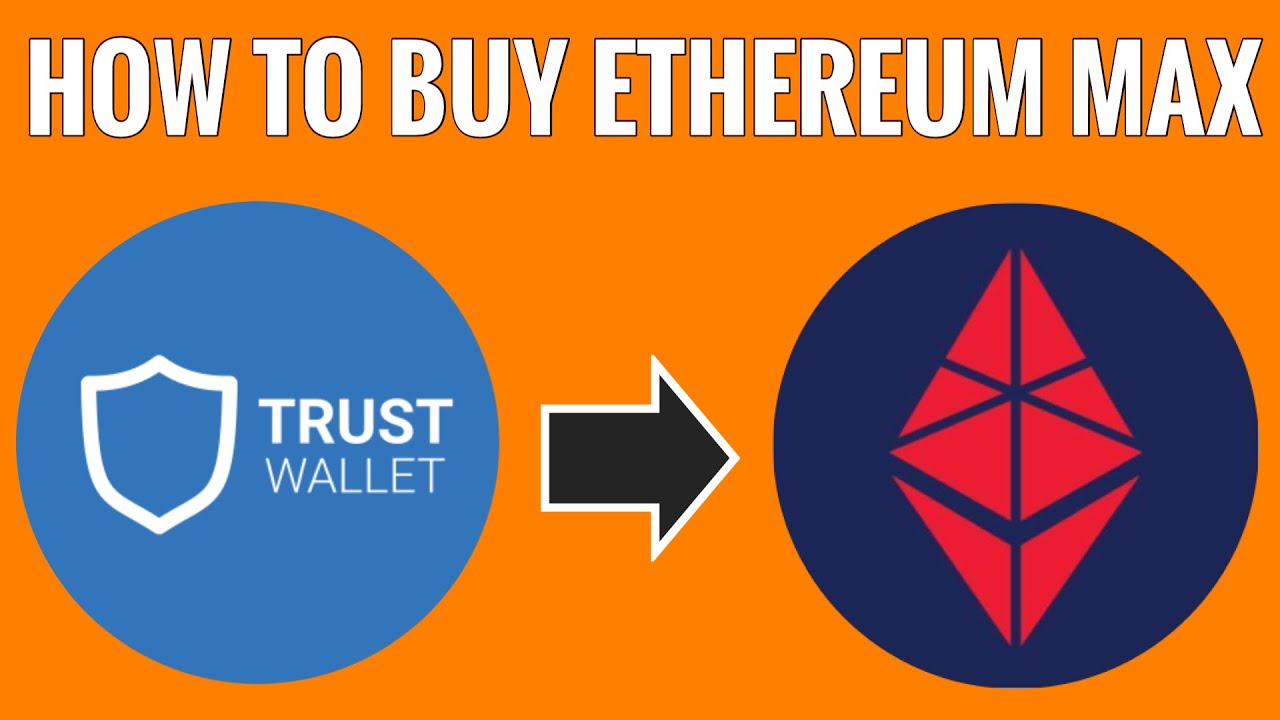Introduction
Welcome to the world of Ethereum options trading! In recent years, cryptocurrencies have gained immense popularity, and Ethereum has emerged as one of the most prominent players in the market. As the second-largest cryptocurrency by market capitalization, Ethereum offers exciting opportunities for investment and trading.
But what exactly are Ethereum options, and why should you consider trading them? In this article, we will explore the ins and outs of Ethereum options trading and provide you with a comprehensive guide to getting started.
Ethereum options are financial derivatives that give traders the right, but not the obligation, to buy or sell Ethereum at a specified price (strike price) within a predetermined period (expiration date). These options provide traders with the flexibility to profit from the price movements of Ethereum without actually owning the underlying asset.
Now, you might be wondering why you should trade Ethereum options in the first place. Well, there are several compelling reasons to consider:
- Potential for Higher Returns: Options trading can offer significant returns compared to traditional buy-and-hold strategies. By correctly predicting price movements, traders can generate substantial profits in a relatively short amount of time.
- Hedging and Risk Management: Options allow traders to hedge their existing Ethereum holdings or other investments. By buying or selling options contracts, traders can protect themselves from potential downside risks in the market.
- Increased Flexibility: Options offer a range of strategies that can be tailored to suit individual trading goals and risk tolerances. Whether you prefer conservative or aggressive approaches, options trading provides you with the flexibility to choose the strategy that aligns with your trading style.
- Market Volatility Opportunities: The cryptocurrency market, including Ethereum, is known for its volatility. While this volatility can pose risks, it also presents opportunities for profit. Options trading allows you to capitalize on these price swings and potentially generate substantial gains.
However, it’s important to note that Ethereum options trading also comes with certain risks. We will discuss these risks and how to manage them later in the article.
Now that you understand the potential benefits and risks of trading Ethereum options, let’s dive into the details of how to get started. From choosing the right options trading platform to understanding the basics of options trading and implementing effective strategies, we will equip you with the knowledge and tools you need to be a successful Ethereum options trader.
What are Ethereum Options?
Ethereum options are financial derivatives that provide traders with the right, but not the obligation, to buy or sell Ethereum at a specified price within a predetermined period. These options are a type of contract that gives traders the ability to profit from the price movements of Ethereum without actually owning the underlying asset.
Options contracts consist of two main types: call options and put options. A call option gives the holder the right to buy Ethereum at a predetermined price, known as the strike price, before the expiration date. On the other hand, a put option grants the holder the right to sell Ethereum at the strike price before the expiration date.
The strike price is the price at which the option can be exercised and is pre-determined when the contract is created. The expiration date is the date when the option contract expires and no longer holds any value.
When trading Ethereum options, traders have the opportunity to profit from both rising and falling prices. If a trader believes that the price of Ethereum will increase, they can buy call options. If the price goes up, the call options will gain value, and the trader can sell them at a higher price, making a profit.
Conversely, if a trader expects the price of Ethereum to decrease, they can buy put options. If the price indeed goes down, the put options will increase in value, allowing the trader to sell them at a higher price and make a profit.
It’s important to note that options trading involves a degree of risk. If the price of Ethereum does not move in the anticipated direction, the options may expire worthless, resulting in a loss for the trader.
Additionally, Ethereum options have an expiration date. This means that traders must be mindful of the time decay factor. As the expiration date approaches, the value of the options may decrease, even if the price of Ethereum remains stagnant. Therefore, timing is crucial when trading Ethereum options.
Ethereum options are typically traded on options exchanges or specialized platforms that facilitate options trading. These platforms connect buyers and sellers and provide a marketplace for options contracts. Traders can choose from a variety of options contracts with different strike prices and expiration dates, allowing them to tailor their trading strategies to their specific goals and preferences.
Overall, Ethereum options provide traders with the flexibility and opportunity to profit from the price movements of Ethereum without the need to own the actual cryptocurrency. With careful analysis, timing, and risk management, trading Ethereum options can be a lucrative venture for those looking to diversify their investment portfolio and take advantage of the volatility of the cryptocurrency market.
Why trade Ethereum Options?
Trading Ethereum options offers several compelling reasons for both experienced traders and beginners to consider. Let’s explore some of the key benefits:
- Potential for Higher Returns: One of the primary reasons to trade Ethereum options is the potential for higher returns compared to traditional buy-and-hold strategies. Options provide traders with leveraged exposure to the price movements of Ethereum, allowing them to amplify their gains if their predictions are correct.
- Hedging and Risk Management: Options trading allows traders to hedge their existing Ethereum holdings or other investments. By buying or selling options contracts, traders can protect themselves from potential downside risks in the market. For example, if you own Ethereum and are concerned about a potential price drop, you can buy put options to offset any potential losses.
- Increased Flexibility: Options offer a range of strategies that can be tailored to suit individual trading goals and risk tolerances. Whether you prefer conservative or aggressive approaches, options trading provides you with the flexibility to choose the strategy that aligns with your trading style. You can use options to generate income, speculate on price movements, or even create complex strategies that involve multiple options contracts.
- Market Volatility Opportunities: The cryptocurrency market, including Ethereum, is known for its volatility. While this volatility can pose risks, it also presents opportunities for profit. Options trading allows you to capitalize on these price swings and potentially generate substantial gains. Whether the market is going up, down, or experiencing significant fluctuations, options provide traders with versatile tools to profit from these movements.
- Limited Risk: Unlike other types of derivatives, options trading comes with limited risk. As an options trader, you only stand to lose the premium paid for the options contract. This limited risk can be particularly attractive for traders who want to participate in the cryptocurrency market but are concerned about potential losses.
Trading Ethereum options can be an exciting and lucrative venture, but it’s important to remember that it also involves certain risks. The key to success lies in proper risk management, thorough market analysis, and a well-defined trading strategy. By understanding the potential benefits and risks, traders can make informed decisions and participate in the dynamic world of Ethereum options trading.
Benefits and Risks of Trading Ethereum Options
Trading Ethereum options offers a range of benefits, but it’s crucial to understand and manage the associated risks. Let’s explore the benefits and risks of trading Ethereum options:
- Benefits:
- Potential for Higher Returns: Trading Ethereum options can provide higher returns compared to traditional investment strategies. With the right timing and analysis, traders can generate substantial profits by capitalizing on the volatility of Ethereum’s price movements.
- Flexibility and Versatility: Options trading allows for flexibility and versatility in trading strategies. Traders can implement a wide range of options strategies, such as buying call options to speculate on price increases or selling put options to generate income.
- Hedging and Risk Management: Ethereum options enable traders to hedge their positions and manage risks effectively. By buying put options, traders can protect themselves against potential price declines, mitigating losses in their Ethereum holdings or other investments.
- Limited Risk: Unlike other types of derivative trading, the risk in options trading is limited to the premium paid for the options contract. Traders know the maximum potential loss upfront, allowing for better risk management.
- Access to Market Volatility: The cryptocurrency market, including Ethereum, is known for its volatility. Options trading enables traders to capitalize on price swings, regardless of the market direction. Whether the price of Ethereum is rising or falling, traders can profit from these movements using different options strategies.
- Risks:
- Price Volatility: While market volatility can be an advantage for options traders, it can also pose risks. Sudden and significant price movements can lead to unexpected losses if the market does not move in the direction anticipated by the trader.
- Time Decay: Options contracts have an expiration date, and as the expiration date approaches, the value of the options may decline. Traders need to be mindful of the time decay factor and carefully consider the time frame of their options positions.
- Complexity: Options trading can be complex, especially for beginners. Understanding the different options strategies, risk profiles, and factors that influence options prices requires a certain level of knowledge and experience. Traders should educate themselves thoroughly before engaging in options trading.
- Market Liquidity: The liquidity of options contracts can vary, depending on the options exchange or trading platform. Thinly-traded options may result in wider bid-ask spreads and potentially impact the execution of trades or the ability to exit positions at desired prices.
It’s essential for traders to evaluate these benefits and risks carefully and develop a comprehensive trading plan. Implementing proper risk management techniques, conducting thorough market analysis, and continually learning and adapting to the changing market conditions can help traders navigate the complexities of options trading and increase their chances of success.
How to Get Started with Trading Ethereum Options
Trading Ethereum options can be an exciting and potentially lucrative venture. If you’re interested in getting started, here are the key steps to follow:
- Educate Yourself: Before entering the world of options trading, it’s essential to educate yourself about the basics of options, including the terminology, strategies, and risk management techniques. Take the time to read books, take online courses, or join trading communities to enhance your knowledge.
- Choose a Reliable Options Trading Platform: Selecting a reputable options trading platform is crucial. Look for platforms that offer a user-friendly interface, competitive fees, a wide range of options contracts, and good customer support. Ensure that the platform has proper security measures to safeguard your funds and personal information.
- Complete the Account Setup: Once you’ve chosen an options trading platform, you’ll need to create an account. Provide the necessary information, complete the verification process, and secure your account with a strong password and two-factor authentication.
- Deposit Funds: Deposit funds into your trading account. Most options trading platforms accept deposits in various cryptocurrencies or fiat currencies. Choose the deposit method that suits you best and ensure that you understand the deposit and withdrawal procedures of the platform.
- Perform Market Research: Before making any trading decisions, conduct thorough market research. Analyze the price trends of Ethereum, study technical indicators, monitor market news, and keep an eye on any upcoming events or announcements that could influence the price of Ethereum.
- Choose Your Options Strategy: Decide on the options strategy you want to implement based on your trading goals and risk appetite. Consider whether you want to buy call options, sell put options, or implement more complex strategies like straddles or strangles. Each strategy has its advantages and risk profiles, so choose the one that aligns with your trading style.
- Execute Trades: Once you’ve identified a trading opportunity, place your trades on the options trading platform. Specify the type of options contract you want to trade, the strike price, the expiration date, and the number of contracts you wish to buy or sell. Review and confirm your trade carefully before executing it.
- Monitor and Manage Your Positions: After executing your trades, closely monitor your options positions. Keep track of Ethereum’s price movements, monitor options market volatility, and continuously assess the profit and risk potential of your positions. Consider implementing stop-loss orders or taking profits when necessary to manage your risk and protect your gains.
- Learn from Experience: Reflect on your trading performance and learn from your experiences. Keep a trading journal to record your trades, outcomes, and lessons learned. Continuously educate yourself, adapt your strategies, and improve your trading skills based on your observations and insights.
Remember, trading Ethereum options involves risk, and it’s important to start with a small amount of capital that you’re willing to risk. As you gain experience and confidence, you can gradually increase your position sizes. Practice disciplined risk management and never invest more than you can afford to lose.
By following these steps and staying informed about the market trends and developments, you can embark on your journey as an Ethereum options trader and take advantage of the exciting opportunities presented by the cryptocurrency market.
Choosing the Right Options Trading Platform
Choosing the right options trading platform is crucial for a seamless and successful trading experience. With numerous options available, here are some factors to consider when selecting an options trading platform:
- Reputation and Security: Look for a platform with a solid reputation and a track record of secure operations. Research customer reviews, user feedback, and check if the platform has experienced any major security breaches in the past. Ensure that the platform utilizes strong security measures, such as encryption and two-factor authentication, to protect your funds and personal information.
- User-Friendly Interface: Opt for a platform with a user-friendly and intuitive interface. A well-designed interface will make it easier to navigate the platform, monitor your options positions, execute trades, and access important information and tools. Test out demo accounts or free trials, if available, to evaluate the platform’s interface before committing to a particular platform.
- Range of Options Contracts: Consider the variety and availability of options contracts offered by the platform. Look for a platform that provides a wide selection of options with different strike prices and expiration dates. Having access to a diverse range of options will enable you to implement various trading strategies and better tailor your trades to market conditions.
- Fees and Charges: Assess the fee structure of the options trading platform. Look for transparent and competitive pricing, including clear details on trading fees, commission rates, and any additional charges for deposits or withdrawals. Compare the fee structures of different platforms to ensure you choose one that aligns with your trading style and preferences.
- Liquidity: Liquidity is essential when trading options contracts. Higher liquidity ensures tighter bid-ask spreads and better execution of trades. Research the platform’s liquidity and trading volume, as well as its partnerships with options market makers or exchanges. A platform with good liquidity will provide better opportunities for entering and exiting positions at desired prices.
- Availability of Research Tools and Resources: Look for a platform that offers comprehensive research tools and resources to support your trading decisions. These may include real-time market data, technical analysis indicators, options profit calculators, educational materials, and interactive charts. Such tools can help you conduct thorough market research and make informed trading decisions.
- Customer Support: Evaluate the quality and responsiveness of customer support provided by the trading platform. A reliable options trading platform should offer prompt and helpful customer support to address any concerns, technical issues, or questions you may have. Test their support channels, such as live chat, email, or phone, before opening an account to ensure they meet your expectations.
It’s essential to compare multiple options trading platforms and consider your specific trading needs and preferences. Take advantage of demo accounts or free trials offered by platforms to test their features and functionality. This will help you assess if the platform aligns with your trading goals and requirements.
Remember that the choice of the options trading platform can significantly impact your trading experience. Take your time to research, ask questions, and seek recommendations from experienced options traders to make an informed decision. Choosing the right platform sets the foundation for your options trading journey and increases your chances of success in the dynamic world of options trading.
Understanding the Basics of Options Trading
To become a successful options trader, it’s crucial to have a solid understanding of the basics of options trading. Here are the key concepts you need to grasp:
- Options Contract: An options contract is a financial derivative that gives the holder the right, but not the obligation, to buy or sell an underlying asset at a predetermined price (strike price) within a specific period (expiration date). In options trading, the underlying asset can be stocks, commodities, or cryptocurrencies like Ethereum.
- Call Option: A call option is a type of options contract that gives the holder the right to buy the underlying asset at the strike price before the expiration date. Call options are typically used when traders expect the price of the underlying asset to rise.
- Put Option: A put option, on the other hand, is a type of options contract that gives the holder the right to sell the underlying asset at the strike price before the expiration date. Put options are commonly used when traders anticipate the price of the underlying asset to fall.
- Strike Price: The strike price is the predetermined price at which the underlying asset can be bought or sold if the options contract is exercised. It is the price at which the buyer of the options contract can exercise their right and the seller must fulfill their obligation.
- Expiration Date: The expiration date is the date when the options contract becomes null and void. After the expiration date, the options contract no longer holds any value. Options contracts can have various expiration dates, ranging from days to months, allowing traders to choose their desired time frame.
- Premium: The premium is the price that the buyer of the options contract pays to the seller. It represents the cost of the options contract and is influenced by factors such as the price of the underlying asset, the strike price, the time remaining until expiration, and market volatility.
- In-the-Money, At-the-Money, and Out-of-the-Money: These terms describe the relationship between the strike price and the current price of the underlying asset. An option is said to be in-the-money if it has intrinsic value, which means the option would be profitable if exercised immediately. At-the-money options have a strike price that is equal to the current price of the underlying asset. Out-of-the-money options have no intrinsic value and would be unprofitable if exercised immediately.
- Options Strategies: There are numerous options trading strategies that traders can utilize based on their trading goals and market outlook. These strategies include buying call or put options, selling options to generate income, or combining multiple options contracts to create more complex strategies.
- Risk and Reward: Options trading involves risk, and it’s important to understand the potential risks and rewards associated with different options strategies. The risk is limited to the premium paid for the options contract, while the reward potential can be significant if the options trade is profitable.
It’s crucial to continue learning and improving your understanding of options trading concepts as you gain experience. Options trading can be complex, and staying informed about market trends, studying various strategies, and continually honing your skills will increase your chances of success.
Remember to practice proper risk management techniques, conduct thorough market analysis, and carefully monitor your options positions. With a solid understanding of the basics of options trading, you’ll be better equipped to navigate the options market and make informed trading decisions.
Strategies for Trading Ethereum Options
When trading Ethereum options, there are several strategies that traders can utilize to achieve their desired outcomes. Each strategy has its own advantages and risk profiles, so it’s important to understand the key strategies available. Here are some common options trading strategies:
- Buying Call Options: This strategy involves purchasing call options when anticipating an increase in the price of Ethereum. By buying call options, traders have the right to buy Ethereum at a predetermined price (strike price) before the expiration date. If the price of Ethereum rises above the strike price, traders can exercise the options and profit from the price difference.
- Buying Put Options: This strategy is used when traders expect the price of Ethereum to decline. By purchasing put options, traders have the right to sell Ethereum at the strike price before the expiration date. If the price of Ethereum falls below the strike price, traders can exercise the options and generate a profit.
- Selling Covered Calls: In this strategy, traders who already own Ethereum can sell call options against their holdings. If the price of Ethereum remains below the strike price, the options will expire worthless, allowing the trader to keep the premium received. However, if the price of Ethereum rises above the strike price, the trader may be obligated to sell their Ethereum at the strike price.
- Selling Cash-Secured Puts: This strategy involves selling put options when the trader is willing to buy Ethereum at a certain price. By selling cash-secured puts, traders collect premium income and may be obligated to buy Ethereum at the strike price if the option is exercised.
- Long Straddle: This strategy involves simultaneously buying a call option and a put option with the same strike price and expiration date. Traders use this strategy when they anticipate significant price volatility in Ethereum but are uncertain about the direction. If Ethereum’s price moves significantly in either direction, the trader can profit from the corresponding options contract.
- Long Strangle: Similar to the long straddle strategy, the long strangle involves buying a call option and a put option with different strike prices but the same expiration date. This strategy is used when traders expect high volatility but are unsure of the specific direction of Ethereum’s price movement. The trader can profit if Ethereum’s price moves significantly in either direction, surpassing the strike prices of the options contracts.
It’s important to note that each strategy has its own risk and reward characteristics. Options trading involves the potential loss of the premium paid, and timing is crucial for success. Traders should consider their risk tolerance, market outlook, and the impact of market volatility when selecting an appropriate strategy.
Additionally, options traders can also combine multiple options contracts and create more complex strategies. These strategies may involve spreads, straddles, condors, or butterflies, among others. These advanced strategies require a deeper understanding of options and may be best suited for experienced traders.
Regardless of the strategy chosen, it’s crucial to practice proper risk management, monitor the market, and be prepared to adjust or exit positions if market conditions change. Continuously educate yourself, stay updated on market developments, and consider using paper trading or virtual accounts to test strategies and refine your skills before committing real capital.
Remember, options trading is a dynamic and ever-evolving field, and it’s important to stay adaptable and open to learning. With the right strategy and proper risk management, options trading can provide opportunities for profit in the rapidly growing world of Ethereum and cryptocurrency markets.
Risk Management in Options Trading
Options trading can be a lucrative venture, but it also involves a degree of risk. Implementing effective risk management strategies is crucial to protect your capital and increase your chances of long-term success. Here are some key risk management practices to consider when trading Ethereum options:
- Determine Risk Tolerance: Assess your risk tolerance before engaging in options trading. Understand your financial situation, investment goals, and comfort level with potential losses. Establishing a clear risk tolerance will help you make objective decisions and avoid excessive risk-taking.
- Use Proper Position Sizing: It’s essential to allocate an appropriate portion of your overall trading capital to each options trade. Avoid risking a significant portion of your capital on a single trade. Consider diversifying your options positions across different underlying assets and expiration dates to spread your risk.
- Set Stop-Loss Orders: A stop-loss order is a predetermined price level at which you will exit a trade to limit potential losses. Set stop-loss orders based on your risk tolerance and market analysis. Be disciplined in executing your stop-loss orders to prevent significant losses if the market moves against your position.
- Limiting Leverage: Options trading provides leverage, which can amplify both profits and losses. While leverage can enhance potential returns, excessive leverage can also increase risk. Use leverage cautiously and avoid overextending your positions beyond your risk tolerance.
- Continuous Monitoring and Adjustments: Monitor your options positions regularly. Stay informed about market news, analyze the price trends of Ethereum, and assess the profitability and risk of your options trades. Be prepared to make adjustments or exit positions if market conditions or your analysis change.
- Thorough Market Analysis: Conduct thorough market analysis before entering any options trade. Consider technical analysis indicators, fundamental factors, and market sentiment. Use multiple sources of information to gain a broader perspective and make well-informed trading decisions.
- Consider Implied Volatility: Implied volatility reflects the market’s expectations of future price movements. Higher implied volatility can increase options premiums but also signifies greater market uncertainty. Be mindful of implied volatility when selecting options contracts and adjust your trading strategies accordingly.
- Practice Proper Diversification: Diversification helps mitigate the risk associated with individual options positions. Consider diversifying your options trades across different underlying assets, expiration dates, and strategies. This can help reduce the impact of potential losses from a single trade.
- Stay Educated: Continued education is vital to managing risk effectively. Stay updated on options trading strategies, risk management techniques, and market developments. Attend webinars, read books, follow reputable trading blogs, and consider joining trading communities to learn from experienced traders.
Remember, options trading involves both the potential for significant gains and the risk of substantial losses. No risk management strategy can guarantee profits or eliminate all risks. It’s essential to assess your risk tolerance, plan your trades carefully, and adapt to changing market conditions. Practice disciplined risk management and be prepared for both favorable and unfavorable outcomes during your options trading journey.
By following these risk management practices and continuously improving your trading skills, you can navigate the ever-changing options market with greater confidence and increase your probability of success.
Conclusion
Trading Ethereum options can offer exciting opportunities for both experienced traders and beginners looking to venture into the world of cryptocurrency trading. By understanding the basics of options trading, including the concepts of call options, put options, strike prices, and expiration dates, you can begin your journey with confidence.
There are numerous benefits to trading Ethereum options, such as the potential for higher returns, hedging capabilities, increased flexibility, and the ability to profit from market volatility. However, it’s crucial to remember the associated risks and practice proper risk management techniques.
When choosing an options trading platform, consider factors such as reputation, security, user interface, range of options contracts, fees, liquidity, and available research tools. Selecting the right platform will provide you with a seamless trading experience and empower you to make informed decisions.
Developing and implementing effective options trading strategies is paramount to your success. Whether you choose to buy call options, sell put options, or utilize complex strategies like straddles or strangles, ensure that your strategies align with your risk tolerance and market outlook.
Additionally, practicing sound risk management techniques is essential. Determine your risk tolerance, utilize proper position sizing, set stop-loss orders, and continuously monitor and adjust your positions. Stay educated, conduct thorough market analysis, and strive to improve your trading skills to increase your chances of success.
Trading Ethereum options can be a dynamic and rewarding endeavor. It offers the potential to capitalize on price movements and generate profits in the rapidly evolving cryptocurrency market. However, always remember to trade responsibly, diversify your portfolio, and never invest more than you can afford to lose.
As you embark on your journey as an Ethereum options trader, remember that experience, continuous learning, and adapting to changing market conditions are key. With proper knowledge, risk management, and perseverance, you can navigate the options market and potentially achieve your trading goals.

























